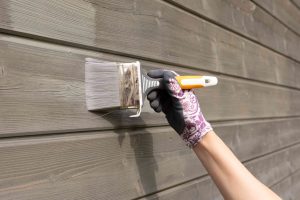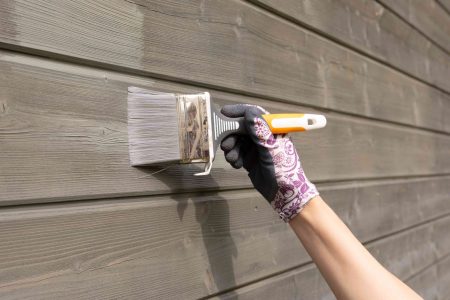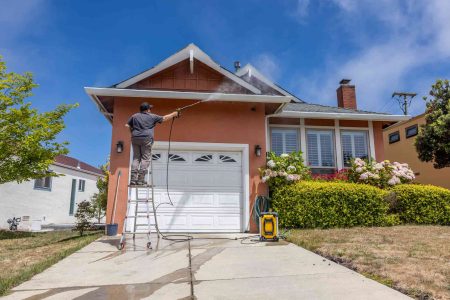There can be any number of reasons why you might need to dig trenches or holes in your yard. And there can be just as many different types of utility pipes and wires running through your lawn at different depths, any one of which could lead to an expensive or dangerous mishap if you cut into a line while digging.
Millions of miles of underground utility lines run beneath residential lawns in the United States. Accidentally cutting into one of these lines can disrupt vital services or even cause a fatal accident. Fortunately, there are effective ways to pinpoint the location of underground utility lines before you dig.
Reasons to Call 811 Utility Marking Services
- Creating a garden pond
- Planting a tree
- Digging up the yard for a sewer trench
- Digging fence post holes
- Digging foundations for a deck, shed, or garage
- Trenching a base for an intended retaining wall
- Digging up parts of your lawn to install an irrigation system
- Trenching your yard to add conduit for an exterior outlet or light
- Creating trenches for drainage lines such as for French drains
- Adding a patio
- Building a carport
Utility Lines Marked vs. Not Marked
When a locating service visits your property, some utilities are marked by the service and other utilities are not.
Usually Marked
- Electrical service wires
- Cable TV or internet service wires
- Telephone service wires
- Sewer and water mains
- Natural gas supply pipes
Usually Not Marked
- Security systems
- Lawn irrigation systems
- Line voltage (120-volt) landscape lighting systems
- Low-voltage landscape lighting wires
- Electrical conduits or underground cables running to pools and spas or to buried septic tanks
Can You Find Utility Lines by Yourself?
You can locate the general direction of utility lines by yourself, but you should always confirm with a locating service before digging.
Over time, as services are added to the house, trenches are dug and earth or sod are laid over the top. Unless marked, trench locations are quickly forgotten. When a home passes from one owner to another, the locations of these utility lines are rarely communicated to the new owner.
Buried depth requirements of these utilities can vary from area to area. In colder climates, sewer and water lines are typically deep in the ground below the winter frost line. Homeowners may dig shallow trenches for irrigation piping or for low-voltage landscape lighting. Often, utility line depth is less a matter of prescribed requirements and more a matter of whim.
The same homeowner who moves to a warm climate, though, can be startled to find that water and sewer pipes are quite shallow. And over the years, utilities are added and canceled, so that you may find that active telephone wires for landlines are still present in your yard, even though you long ago transitioned to cell service for all your telephone needs.
How to Find Utility Lines by Yourself
One way to find the general location of a utility line is to look for its start and end points, then draw a mental line between the two points.
For example, to locate the general path of the water line from the street to your house, first locate the point on the street where the water line enters your yard. Usually, this is the water meter.
Next, find the point where the water line enters your house. Think of a straight line between the two points to get a general sense of where the water line runs across your yard.
This method is not conclusive. While it’s ideal to bring a wire or pipe in a straight line, this may not always be the case. If the wire or pipe approaches a major obstruction like a garden pond or foundation footers, it will detour around the obstruction.
Warning
Always double-check by having the local 811 service visit your property and mark for utilities. Never try to locate a utility line by probing the ground.
How to Contact 811 Utility Mark System
When you call 811, the process works like this:
- Call 811 before you dig.
- Your phone call will be routed to a central call center.
- Answer the dispatcher’s questions regarding the nature of your planned digging project.
- The dispatcher will reach out and contact any public utilities in your area that might be affected by your digging project. In some cases, the actual location and marking will be done by private companies working under contract with the utility companies. In other instances, it will be employees of the utility company who do the work.
- Before the 811 technician visits your home, make sure that they have full access to the exterior. Bring dogs inside or chain them up, unlock gates, and turn off exterior security devices.
- Workers will visit your property and mark the ground with paint or flags to indicate the location of underground utility wires and pipes.
- The markings are regarded as valid for about one month after they are marked since the water-soluble paint can wash off over time. Wait until all utilities have been marked before you start digging. If your work will not begin for 30 days or more after the initial marking, you should call 811 again and have the marking repeated.
Typical Utility Line Color Codes
- White: Proposed excavation
- Pink: Survey markings
- Red: Electric
- Yellow: Gas, oil, steam
- Orange: Communications, alarms
- Blue: Potable water
- Purple: Reclaimed water, irrigation
- Green: Sewer
Limitations of 811 Utility Location Service
This free 811 coordination service will mark the location of utilities up to the point where the lines make their initial connection to the home or service meter. If these lines continue underground—such as from a house to a detached garage or shed—the 811 coordination service does not pinpoint the location of these secondary lines. These secondary lines are considered to be the owner’s property, not the utility company’s.
Also, 811 does not coordinate location services for any service wires or pipes that are not considered public utilities or which have been installed by private companies.
The 811 utility location service only identifies underground services. For example, municipal power that enters the home through the service drop is not part of the 811 program.
Where private companies have installed underground pipes or cables, contact the company and ask for assistance in locating them. In some instances, you will be charged for this service.
How Far in Advance to Call 811?
Call about three days or more before you plan to dig to give the service enough time to schedule you. The lead time required varies from region to region.
Do not call more than 30 days before you begin your project. Temporary marking paint typically has a 30 day limit before it washes away or fades.
Regional Services
In some areas there are aggregated services similar to the nationwide one—but on a smaller, regional scale. A few of the larger services:
- Miss Utility: Delaware, Maryland, and Washington, DC
- Call Before You Dig: Oregon, Washington, Montana, Hawaii
- New York 811: New York
Individual states often maintain web portals providing information on safe digging. They are easily found by typing “811 (state name)” in the browser window.
These regional and state services are now generally coordinated with the national 811 service, but they may offer additional services. For example, the local aggregated services may let you schedule on-line, or they may put you in touch with private location services who, for an additional fee, can locate and mark any private utility lines on your property that are not covered by 811. These web sites also offer a wealth of information on how to plan and execute a safe excavation.
Tips for Digging Around Utility Lines
- Keep your trenches or holes at least 18 inches away from 811 markings. The tools used to locate underground wires are not always precise, and 811 guidelines say that holes or trenches should be kept at least 18 inches away from either side of marked lines.
- If you have installed underground wires or pipes yourself, consult your notes to determine their location. Most irrigation pipes and low-voltage cables will be fairly shallow, so digging a series of test holes by hand can help you locate them.
- There are private location services that will inspect your property for a fee and locate any underground pipes, conduits, and wires. This is especially helpful for non-public utility lines that were installed by private companies.
- Dig slowly. Irrigation lines and landscape lighting conduits and cables are not identified by 811 location services, so dig methodically and slowly, examining the excavation regularly for unexpected pipes and cables.
Read the full article here














